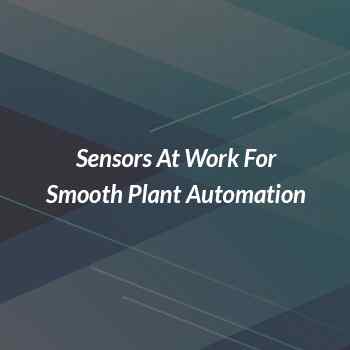7 Main Types of Industrial Level Sensors
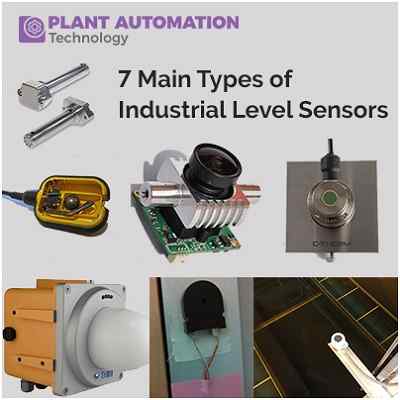
The industrial level sensors are devices that can be used to monitor or determine the liquid or solid level in a vessel, tank, or any other container used as part of a system or process. Different kinds of industrial level sensors are employed in manufacturing and industrial process control settings and systems. The industrial level sensors keep track of the amount of product in storage containers. Their usage extends past manufacturing and industrial environments, and they are the driving device in the fuel level gauges in most airplanes, cars, and boats. The industrial level sensors include a wide range of technology from simple levers to gamma-ray detection and are used in almost any application with a liquid in a tank or solid product in a granular form. The selection of these industrial level sensors is dependent upon -
- the type of liquid/solid being monitored
- how much access is available to the fluid/solid, and its properties
The rise in the production of vehicles, the development of smaller, smarter, and cheaper sensors, and supportive government regulations are the major factors that are expected to be driving the industrial level sensors market. Besides this, the growing adoption of industrial level sensors in healthcare end-use applications and increasing advancement of the industrial internet of things (IIoT) and industry 4.0 is further expected to support the growth of the market.
In this article, we are going to discuss the different types of industrial level sensors.
The industrial level sensors can be broken into two classifications - Point level measurement and Continuous level measurement.
When a product is present at a certain point, it is specified by point level measurement, whereas continuous level measuring indicates the continuous level of a product as it rises and falls. Capacitance, Optical, Conductivity, Vibrating (tuning fork), Float Switch are the sensors for point level indication, while Ultrasonic and Radar (Microwave) are the sensors for continuous level measuring.
| Also Read: Sensors in the Internet of Things (IoT): Enhancing Connectivity and Data Collection |
Point Level Measurement Sensors
Let's discuss point level indication sensors first, beginning with capacitance level sensors.
Capacitance Level Sensors
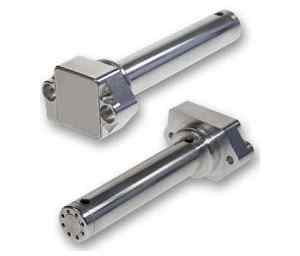
The capacitance level sensors are operated by using a probe for checking changes in the level. These level changes are converted into analog signals. Generally, the probes are made of conducting wire by PTFE insulation. But, stainless steel probes are extremely responsive and hence they are suitable for measuring non-conductive substance granular or materials with low dielectric constant. These types of sensors are very easy to use and clean as they don't have any moving components. Besides, they are small, inexpensive than other sensors, accurate, and invasive to the product. However, they may require calibration and can only be used in certain liquids.
The capacitance level sensors are commonly used in applications such as tank level monitoring in chemical, food, water treatment, battery industries, and brewery industries.
| Also Read: Smart Sensors: Revolutionizing Plant Automation through Real-Time Data Insights |
Optical Level Sensors
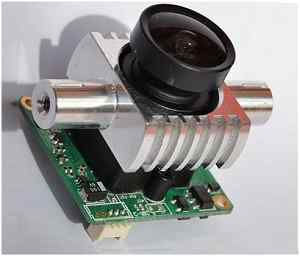
The optical sensors work based on the changes of transmission in infrared light emitted from an IR LED. By using a high energy IR diode and pulse modulation methods, the interference from the produced light can be reduced. In simple terms, they work by converting light rays into electrical signals which measure a physical quantity of light and then translate it into a measurement. These sensors also don't have moving parts, are not affected by high temperature or pressure, can be used in liquid applications, and are small in size. However, cleaning is required if the lens gets dirty or coated.
They can be used as low-level indicators to avoid run dry conditions when using coolant, oil, or hydraulics. Commonly used in applications like tank level measurement and leak detection.
On the other hand, the continuous optical level sensors, use the highly intense laser light that can instill dusty environments, and notice liquid substances.
Conductivity Level Sensors

Also called resistive level sensors or conductive probe sensors. These industrial level sensors are used to measure the level of liquids or fluids that are electrically conductive. It uses a probe to read conductivity. The probe consists of a pair of electrodes and applies alternating current to them. When a liquid covers the probe, its electrodes form a part on an electric circuit, causing current to flow which signals a low or high level. Conductivity level sensors also have no moving parts, are low cost, and fairly easy to use. The disadvantages of these sensors are they are invasive, can only sense conductive liquids, and the probe will erode over time.
These level sensors are used for tank level measurement for boiler water, highly corrosive liquids, and reagent monitoring.
Vibrating (Tuning fork)

The vibrating or tuning fork sensor can be used to detect overfill or to prevent dry-running for applications where there's turbulence, air bubbles, or varying products. A fork-shaped sensing element with two tines is used in this type of sensor. The tuning fork vibrates at its mechanical resonance frequency of approximately 1200 Hz and is piezo-electrically energized. The frequency of the fork changes when the fork is submerged in the media and this change is detected by the internal oscillator and converted into a digital output signal. The tuning fork sensors are cost-effective and compact, easy to install, invasive to the product, and essentially maintenance-free.
However, the tuning fork sensors can be used in conjunction with continuous level detection systems, acting as alarm points for leaks and over-filling. The vibrating sensors are perfect for solid and liquid level control, including foam and sticky materials, as well as fine-grained solids and powders. They have indefinite uses depending on the material that they can sense.
Food, beverage, mining, and chemical processing industries utilize these sensors for their applications.
Float Switch Sensor
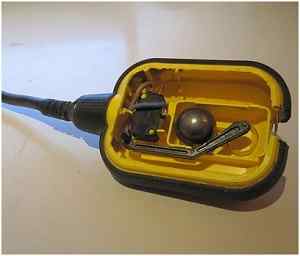
This type of industrial level sensor is one of the most cost-effective, but well-proven technologies for liquid level sensing. The float switches utilize a float, a device that will raise or lower when a product is applied or removed, which will open or close a circuit as the level raises or lowers moving the float. Although the design is simple, this technology provides long-term reliability at an attractive price point. Based on what mounting style the user selects heavily depends on the construction and design of the tank or container the switch will be positioned. Normally, suppliers will suggest a range of mounting options, with the most common being side mounting/horizontal and vertical mounting. The float switches are non-powered devices that provide a direct indication. They are relatively inexpensive. The disadvantages of a float switch are they are invasive to the product, have moving parts, and can be large in size. The float switches only indicate a low/high level, they cannot measure a variable level. An immense use for float switches is in liquid storage tanks for high or low-level indication.
The float switch sensors are commonly used in tank level applications where oil, water, chemicals, and hydraulic fluids are being used.
Continuous Level Measurement Sensors
Let's discuss continuous level measurement sensors first. We shall start with industrial ultrasonic level sensors.
Industrial ultrasonic level sensors
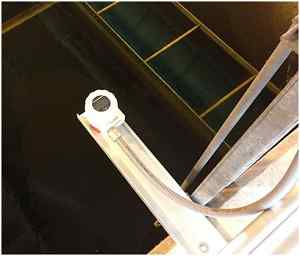
The industrial ultrasonic sensors are used to detect the levels of sticky liquid substances and bulkiness materials as well. They work by emitting and receiving ultrasonic waves, at the range of frequency from 20 to 200 kHz. The waves are then replicated back to a transducer. The distance is measured by the time it takes for the waves to reflect back. Pressure, moisture, turbulence, and temperature influence the ultrasonic sensor's response. Besides, the transducer is necessary to be increased appropriately to get a better response. The industrial ultrasonic level sensors have no moving parts, are compact and cost-effective, reliable, and non-invasive. In this level sensor, self-cleaning is required because of the vibrations they give off and is unaffected by the properties of the material they are sensing. Using ultrasonic level sensors is the best choice as an industrial water level sensor due to is lower cost and application-specific benefits.
The industrial ultrasonic level sensors are used to control the fine-grained solids within mining and powders, liquid-level, food and beverage industries, and chemical processing.
Radar (Microwave) Sensors

The operation of radar or microwave sensors is similar to ultrasonic. But, the pulses travel at the speed of light and again; the repeatability and reliability can be exaggerated - but this time by the dielectric constant of the fluid. These sensors send microwaves by an antenna on the radar sensor. The product that's being sensed reflects these microwaves back to the antenna and the time from emission to receiving of the signal is proportional to the level of the product. However, very accurate level information can be obtained with radar and also compensate for fixed structures within the container. The radar sensors are unaffected by dust, temperature, or pressure. They can also measure pastes, liquids, solids, and powders. These are very accurate and need no calibration. Besides, they are non-invasive, as they don't have to touch the product that's sensing. The radar sensors are expensive and have a limited detection range. They are even used as a wastewater level sensor to measure the level, sludge, and chemical solutions in sewage treatment.
They are commonly used in applications like moist, vaporous, and dusty environments. They are also utilized in systems in which temperatures differ.
Selection Criteria
Before selecting a level meter, controller, or any other level measurement instrument, make sure you have the answers to the following main questions.
• Are you measuring a liquid or solid (bulk)?
• How thick/viscous is the material?
• What are the application's operating temperature and pressure ranges?
• Is the point level or continuous measurement required?
• What level measurement range do you need?
• What are the chemical properties of the product to stability and corrosiveness?
• Is the application a novel installation or retrofit or existing process installation?
• Is the measured material electrically conductive? What is the dielectric constant for the media?
• Are there obstructions/limitations that would block probe or sensor placement?
• Will the substance coat or put up up on surfaces?
• Does turbulence, surface foam, vapor, coating of sensors occur at the surface of the liquid?
• Will you require contact or non-contact level measurement?
• What kind of output do you need–analog, relay, digital display, etc from the sensor?
Conclusion
A few level sensor applications can overlap and when deciding on a sensor it's essential to identify the product that you are sensing and the type of feedback that your application needs. A high or low level can be indicated by sensors like conductivity or resistance, capacitance, tuning fork, float switches, and optical level sensors, whereas ultrasonic and radar level sensors can determine your level to give specific response to how much of the product is in a tank. These type of industrial level sensors can be used in different applications like high-level sensing or low-level sensing, leak detection, alarms, overfill shutoff, and they are also found in a wide variety of industries like manufacturing, marine, food and beverage, manufacturing, medical, pharmaceutical, and fuel/energy management.








